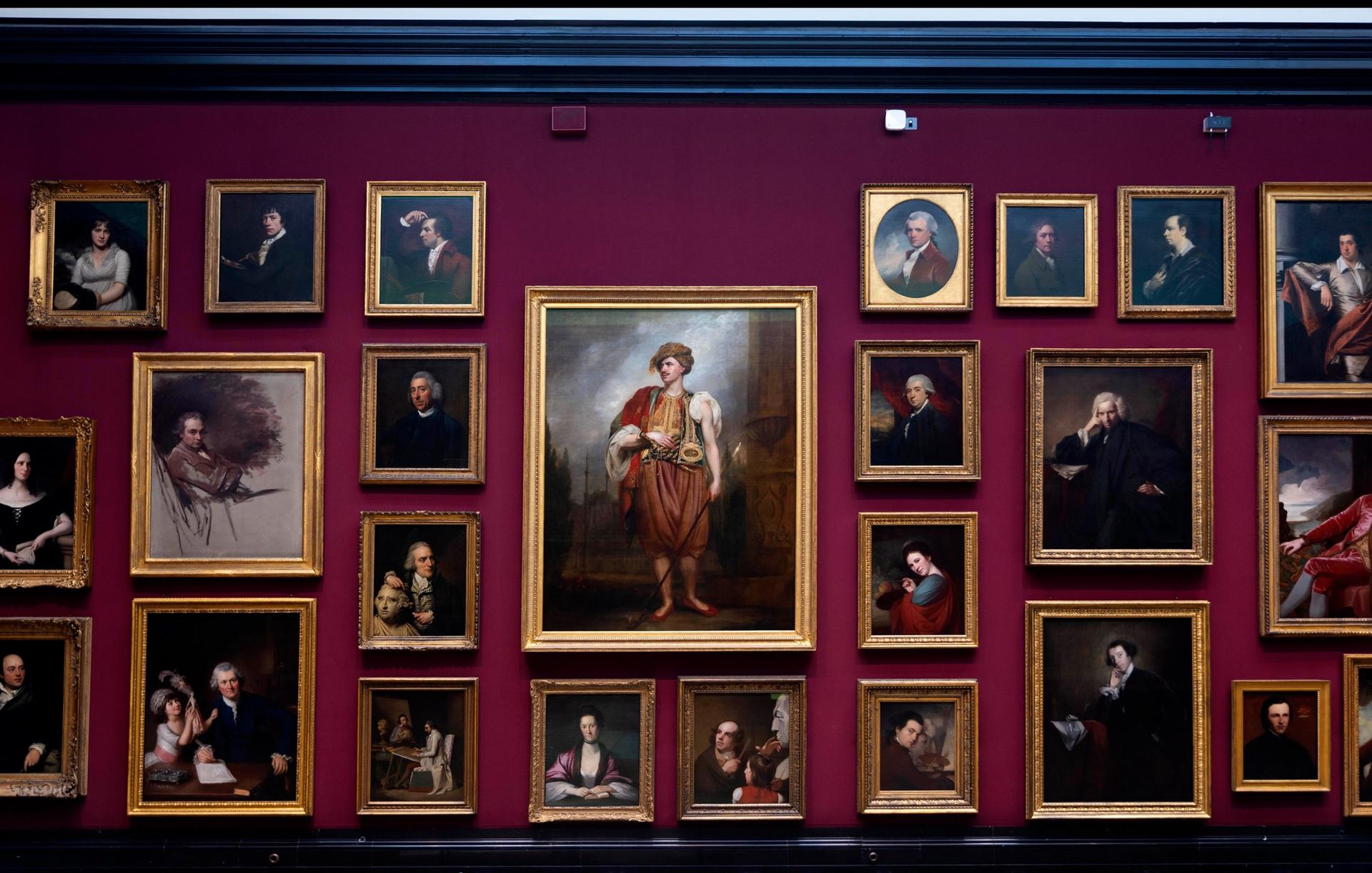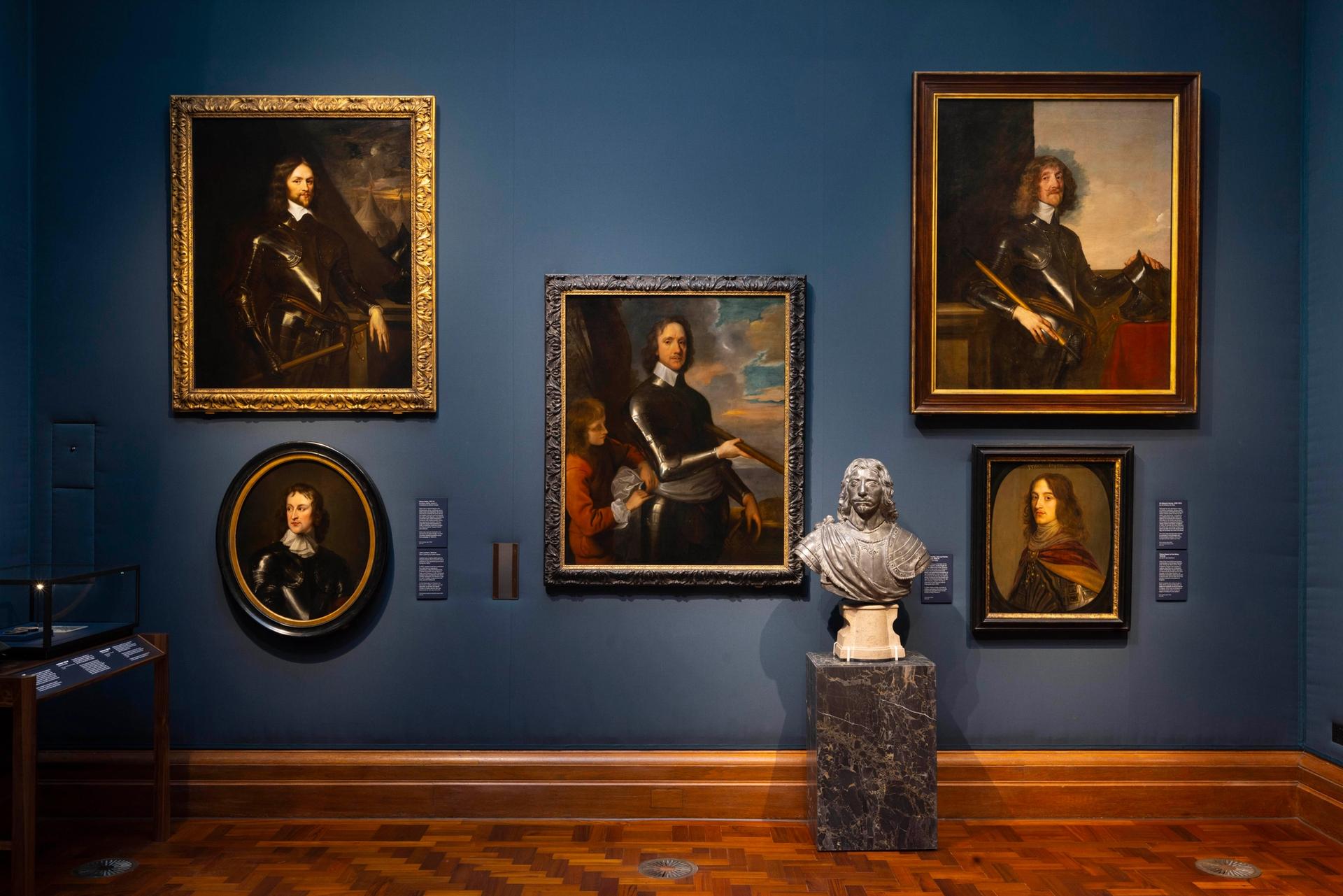These are the life and death masks,” says Nicholas Cullinan, the director of the National Portrait Gallery (NPG), pointing to the frozen features of John Keats and William Blake but also to likenesses of Shami Chakrabarti and Tracey Emin, happily still with us. And additionally, soon to be installed in a central vitrine, Marc Quinn’s infamous “Blood head”.
The director of the NPG is showing The Art Newspaper one of the new attractions he has introduced during the gallery’s long closure. Cullinan thinks these morbidly intimate portraits will fascinate visitors, but his innovation is also a creative use of the available floorspace at his West End domain.
The building has been off-limits for three years during a redevelopment and makeover costing £41.3 million. The masks are exhibited in the Rotunda, a small room looking out towards St Martin’s in the Fields. “It’s a great space but it’s quite hard for paintings, you only have one viable wall,” Cullinan points out. This select but imaginative display could almost be his vision in miniature. “I think people will find it intriguing and quirky. We didn’t want to lose that about the Portrait Gallery because people, myself included, know it and love it and think of this place as slightly differently to others.”

Room 18 at the new National Portrait Gallery, a display of works from the 18th century in a Royal Academy inspired salon hang © David Parry
Cullinan, who is 46, fell in love with the NPG when he worked there in 2003 as a ‘visitor service assistant’ while studying at the Courtauld Institute of Art. “One of the things I wanted to do was to make the museum as beautiful as I possibly could. I loved the gallery, but it wasn’t always a memorable experience aesthetically. And actually, it’s a beautiful building and a beautiful collection. I want to do a lot more things than just beauty, but I definitely want to do that.”
Cullinan’s vision of a beautiful NPG has not involved erecting a spanking new wing but stripping away a lot of clutter to rediscover the splendour of the original 1893 design by its first director, Sir George Scharf.

Room 25 at the new National Portrait Gallery, ‘The First World War to the Bright Young Things’ © David Parry
Characterful palazzo floors have been exposed and conserved. The logo that Scharf created in a sketch in 1893, a motif found in the paving of the old entrance hall, is the NPG’s official trademark once more, printed on umbrellas and mugs in the new gift shop which looks out onto the Charing Cross Road.
“There were lots of windows bricked up or behind shutters, skylights were covered in lead, so the whole building felt quite dark and closed from the outside,” Cullinan says. He quotes a remark by the architect who has led the project, Jamie Fobert. “Jamie said that this is a public institution which feels more like a private gentleman’s club. It’s keeping everyone at bay rather than welcoming them in. Now we have lots of light and you can orient yourself.”
Fobert has created a grand new entrance now, looking north and facing Leicester Square. People used to walk past the old doors without noticing them, according to Cullinan, but the new entrance gives the gallery “a public presence”, with its own courtyard, echoing the very well-established location of its neighbour, the National Gallery, in Trafalgar Square. At the official reopening next Tuesday, the Princess of Wales will meet Fobert and Tracey Emin, who was commissioned to create an artwork for the gallery’s new doors, incorporating 45 carved brass panels, representing “every woman, throughout time”.
The NPG also spent £2.7m to snap up an old ticket booth which stands in front: it is a place to sell coffee and flowers, Cullinan suggests, but also offers access to substantial underground space.
Once inside the main building, visitors are greeted by a “more human and harmonious space”, with the previously over-dominant escalator now discreetly enclosed, and a new double-height wooden ticket desk. While the temporary exhibition space is still housed on the ground floor—the opening show will be a blockbuster Paul McCartney photography exhibition titled Eyes of the Storm—there are now also prominent collection displays, so that the gallery’s free permanent holdings can be enjoyed as soon as one enters, instead of paying exhibitions coming first (described by Cullinan as an unwelcome sense of “paywall”).
His “laundry list” for improving the NPG included providing step-free access and making sure the lifts reached every floor. There is a new learning centre, with three studios, in the basement, next to “the moat”, a lightwell which doubles as a small courtyard garden. A new staircase designed by Fobert—with a lovely contemporary take on Victorian wrought ironwork–connects the centre with the rest of the gallery and has not one but two bannisters: one for adults, and another, at a lower height, for children.

Room 6 ‘Civil War, Republic & Return of the King’ featuring Oliver Cromwell, Edmund Verney and a bust of Thomas Fairfax © David Parry
In the upstairs galleries, Cullinan says that he and Fobert have once more followed Scharf’s founding vision; in this case, by evoking the interior of a Florentine palace (the NPG’s historic building was modelled on a Michelozzo-style palazzo). They have added a bold colour scheme intended to refresh visitors’ flagging eyeballs: galleries painted a rich blue open onto spaces finished in bright strawberry sorbet.
The NPG has undergone a complete rehang that has introduced a more diverse range of portraits. There a new study of Dame Doreen Lawrence by Thomas Ganter, Khadija Saye’s photographic self-portrait (Saye tragically died in the Grenfell fire) and the author Zadie Smith has sat for the Nigerian-American artist Toyin Ojih Odutola.
As part of a three-year collaboration with Chanel, a large mural featuring 130 women from throughout British history, title Work in Progress, was commissioned from Jann Hawarth and Liberty Blake. Cullinan says, “When we closed in 2020, 35% of the portraits on display in our post-1900 galleries were of women. Now it’s 48%—a massive jump in three years.” But Cullinan says he was not influenced by the recent rehang at Tate Britain, which was criticised by the Guardian as “vacuous, worthy and dull”. “I’ve seen it, but we haven’t compared notes or anything. In some ways you could say that they’re doing something similar to what the NPG has always done, which is to have more historical context. We weren’t really looking over our shoulder.”
The collection will be interspersed with judicious loans and the hang is still chronologically led, kicking off with the much-loved Tudor gallery, with the portraits hung on new fabric-covered walls (adorning every wall of the second floor), and with the promise of livelier accompanying labels.

Joshua Reynolds’s Portrait of Mai (Omai) (around 1776)
How does the NPG now decide who to commemorate with a portrait? Is the last word with the curatorial team or the board of trustees? Cullinan replies, “When it comes to acquisitions, that tends to be curatorially led, as with any museum. We put forward potential acquisitions to be approved by the trustees. But one thing we do that’s very different to any other museum is we commission. We put forward a list of people who are not in the collection.” The trustees make the final decision about new sitters, and the curators then choose artists to make their portraits.
The most attention-grabbing new acquisition is Sir Joshua Reynolds Portrait of Mai (Omai) (1776), which the NPG bought in April for £25m. They share the work with the Getty Museum in Los Angeles, which contributed a similar sum. The co-owners will take it in turns to display the painting. This unusual timeshare scheme was brokered by Cullinan, who has called Mai the most significant acquisition the NPG has ever made. “It has never been in a museum collection; it’s always been in private hands—it’s been in a vault for 20 years. And I think when we reopen and everyone can see it, it’s going to make a big difference to people.” The portrait looks astonishingly fresh, with the impasto still intact.
Like Cullinan’s collection of life and death masks, the acquisition of Mai is a statement of intent from the new-look NPG. “To have this image of a non-white individual in Georgian Britain that is given dignity is very powerful. That’s all we’ve tried to do, just to have the highest quality of portraits on display. It’s very simple really.”










